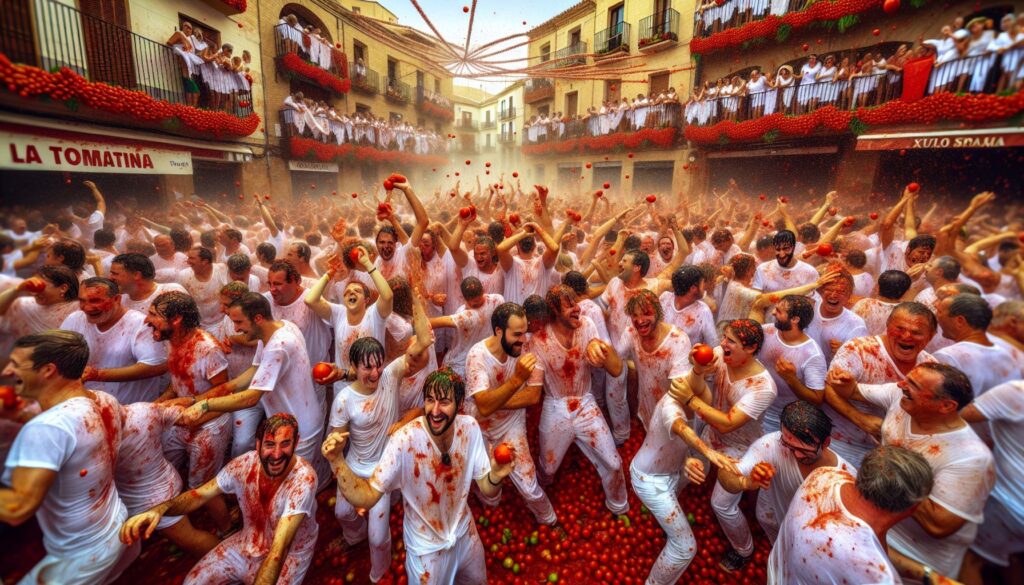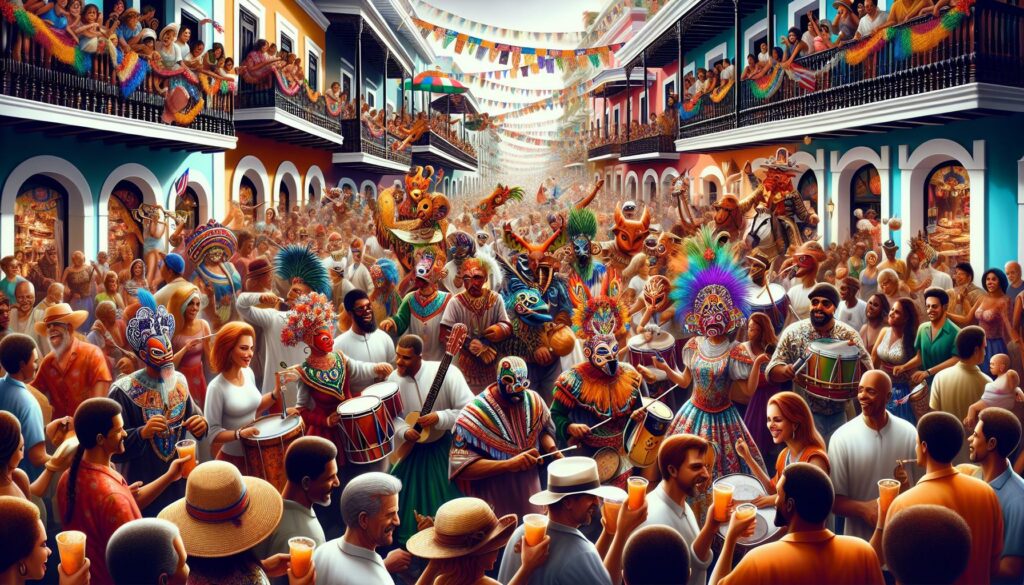As someone who’s spent years immersing myself in Spanish culture I can tell you that Spain’s rich traditions go far beyond flamenco and bullfighting. The vibrant tapestry of Spanish cultural activities reflects centuries of history art and passionate community celebration.
I’ve discovered that Spanish cultural activities serve as the heartbeat of local communities bringing people together through festivals music and shared traditions. From the tomato-throwing frenzy of La Tomatina to the spiritual pilgrimages along the Camino de Santiago these activities showcase Spain’s unique ability to blend ancient customs with modern revelry. Whether you’re a curious traveler or a culture enthusiast Spain’s diverse range of activities offers something for everyone.
Key Takeaways
- Spanish cultural activities range from traditional festivals like La Tomatina and Running of the Bulls to modern film festivals and art shows, offering diverse experiences for both locals and visitors.
- Traditional dance forms like flamenco incorporate three key elements (cante, toque, and baile), while regional folk dances preserve unique local heritage through distinct styles and movements.
- Spanish culinary traditions center around tapas culture and regional cooking specialties, with hands-on cooking classes available across different provinces teaching authentic techniques and recipes.
- Art forms in Spain blend centuries-old craftsmanship with contemporary innovations, from pottery and ceramics to traditional crafts like metalwork and textile production.
- Modern cultural events, including international film festivals and art shows like ARCO Madrid, contribute significantly to Spain’s cultural economy while preserving traditional values.
Spanish Cultural Activities
Spanish festivals combine centuries-old traditions with modern festivities, creating unique cultural experiences throughout the year. Each celebration showcases specific aspects of Spanish heritage through music, food, costume and communal participation.
Running of the Bulls
The Running of the Bulls occurs during the San Fermín festival in Pamplona each July 7-14. Six wild bulls race through the city’s narrow streets alongside thousands of participants dressed in traditional white clothing with red scarves. The 875-meter course starts at the corral in Calle Santo Domingo, continuing through the town’s medieval streets to the bullring. Key safety measures include:
- Designated medical stations positioned along the route
- Wooden barriers protecting spectators from the running path
- Professional runners guiding the bulls through strategic points
- Morning-only runs starting at 8 AM sharp
La Tomatina Festival
La Tomatina transforms the streets of Buñol, Valencia into the world’s largest food fight every last Wednesday of August. The hour-long tomato battle involves:
| Festival Statistics | Numbers |
|---|---|
| Annual participants | 20,000 |
| Tomatoes used | 145,000 kg |
| Duration | 1 hour |
| Entry ticket cost | €10 |
- Squashing tomatoes before throwing to prevent injury
- Using only official trucks for tomato distribution
- Wearing goggles for eye protection
- Following the water cannon signals that mark start and end times
Spanish Dance and Music
Spanish dance culture integrates traditional artistry with modern expression through distinct rhythms movements. Each dance style carries a unique cultural signature shaped by regional influences historical events.
Flamenco Dancing
Flamenco emerged from Andalusia’s Roma communities combining intricate footwork palm-clapping passionate movements. The dance features three core elements: cante (singing) toque (guitar playing) baile (dance) performed in traditional tablaos (flamenco venues). Professional dancers wear traje de flamenca dresses with ruffled skirts while executing precise heel strikes zapateos arm movements braceos.
| Flamenco Style | Origin Region | Key Characteristics |
|---|---|---|
| Soleá | Cádiz | Slow tempo passionate movements |
| Bulerías | Jerez | Fast-paced festive style |
| Seguiriyas | Seville | Deep emotional expression |
Regional Folk Dances
Spanish regions preserve unique folk dances reflecting local traditions cultural heritage. The jota from Aragón features jumping steps quick turns while couples dance with raised arms. Sardana from Catalonia involves groups dancing in circles with intricate footwork precise timing. In the Basque Country the aurresku ceremonial dance honors distinguished guests through solo performances.
| Region | Dance Style | Traditional Music |
|---|---|---|
| Aragón | Jota | Castanets bandurria |
| Catalonia | Sardana | Cobla ensemble |
| Galicia | Muñeira | Gaita bagpipes |
Spanish Culinary Traditions
Spanish gastronomy combines regional ingredients with time-honored cooking methods to create distinctive flavors across different provinces. Traditional Spanish cuisine emphasizes fresh ingredients local producers harvest daily to maintain authenticity in every dish.
Tapas Culture
Tapas represent Spain’s social dining culture through small, shareable portions served in bars alongside drinks. Popular tapas include:
- Patatas bravas – crispy potatoes with spicy tomato sauce
- Jamón ibérico – dry-cured ham from black Iberian pigs
- Tortilla española – traditional Spanish omelet with potatoes
- Gambas al ajillo – garlic shrimp in olive oil
- Croquetas – breaded rolls filled with béchamel sauce mixed with ham or chicken
Tapas bars typically serve these dishes from 1:00 PM to 4:00 PM for lunch and 8:00 PM to midnight for dinner, aligning with Spanish meal schedules.
Regional Cooking Classes
Spanish culinary schools offer hands-on experiences teaching regional specialties across different provinces:
- Paella workshops in Valencia teach traditional rice preparation techniques
- Basque Country pintxos classes demonstrate intricate small-plate assembly
- Andalusian gazpacho courses focus on cold soup preparation methods
- Catalan cooking programs explore Mediterranean seafood dishes
- Galician sessions highlight octopus cooking techniques
- Market visits to select fresh ingredients
- Recipe documentation in English
- Wine pairing recommendations
- Cultural context about regional ingredients
- Take-home spice collections
| Region | Signature Dish | Class Duration | Average Cost |
|---|---|---|---|
| Valencia | Paella | 4 hours | $85 |
| Basque | Pintxos | 3 hours | $65 |
| Andalusia | Gazpacho | 2 hours | $45 |
| Catalonia | Seafood | 4 hours | $95 |
| Galicia | Pulpo | 3 hours | $75 |
Spanish Art Forms
Spanish artisans preserve centuries-old techniques while embracing contemporary innovations in various mediums. Their work reflects regional influences from Islamic geometric patterns to Celtic symbolism.
Pottery and Ceramics
Spanish ceramics incorporate distinctive regional styles dating back to the 8th century. The pottery town of Talavera de la Reina produces blue-and-white majolica pieces with intricate floral patterns while Granada’s Fajalauza ceramics feature green-and-blue botanical motifs. Key pottery centers include:
- Manises features metallic-lustered ceramics with Moorish designs
- Triana district creates vibrant azulejos tiles for architectural elements
- La Bisbal d’Empordà specializes in terracotta cookware with black glazes
- Sargadelos produces contemporary porcelain with Celtic-inspired patterns
Traditional Crafts
Spanish artisans maintain time-honored crafting techniques across diverse materials. Each region showcases specific craftsmanship:
- Toledo steel crafting creates ornate swords with damascene inlays
- Ubrique leather working produces luxury accessories with hand-tooled details
- Almagro lace making features intricate bolillo patterns on black backgrounds
- Valencia silk weaving creates rich brocades with metallic thread accents
- Córdoba silversmithing incorporates filigree techniques in jewelry pieces
| Craft Type | Active Artisans | Annual Production Value |
|---|---|---|
| Ceramics | 3,500 | €245 million |
| Leather | 2,800 | €180 million |
| Metalwork | 1,900 | €155 million |
| Textiles | 4,200 | €290 million |
Language and Literature
Spanish literary traditions blend classical works with contemporary expressions through interactive cultural activities that engage both locals and visitors.
Poetry Readings
Spanish poetry readings transform public spaces into literary venues where performers recite works from celebrated poets like Federico García Lorca, Antonio Machado and Miguel Hernández. These events occur in:
- Cultural centers hosting weekly recitals of classical Spanish verse
- Poetry cafés organizing open mic nights for emerging poets
- Universities conducting poetry slams with 50+ participants
- Public libraries featuring bilingual readings of translated works
- Literary festivals showcasing 100+ poets across 3-4 days
- Professional cuentacuentos (storytellers) performing at 200+ cultural venues
- Monthly tertulia gatherings where 15-20 people share traditional tales
- Regional story circles preserving local myths in native dialects
- Educational programs bringing storytellers to 500+ schools annually
- Street performances incorporating puppetry with classic Spanish stories
- Digital archives collecting 1000+ recorded oral histories from elders
| Storytelling Format | Annual Events | Average Attendance |
|---|---|---|
| Poetry Festivals | 25 | 5,000 per festival |
| Story Circles | 450 | 30 per session |
| School Programs | 2,500 | 100 per event |
| Public Readings | 1,200 | 75 per reading |
Modern Cultural Events
Spain’s contemporary cultural scene blends traditional values with innovative expressions through dynamic events throughout the year. These modern celebrations showcase Spain’s evolving artistic identity while honoring its cultural heritage.
Film Festivals
The San Sebastián International Film Festival leads Spain’s cinematic calendar with 175,000 annual attendees viewing 200+ films. Major events include:
- Attracts 3,500 industry professionals from 80 countries each September
- Features competitive sections for Spanish-language films through “”Horizontes Latinos””
- Hosts red carpet premieres at the iconic Kursaal Congress Centre
- Awards the prestigious Golden Shell to outstanding international features
The Málaga Film Festival celebrates Spanish cinema each spring with:
- Screens 200 films across 11 competitive categories
- Draws 150,000 visitors during its 10-day run
- Organizes industry meetings connecting 2,000 professionals
- Presents the Biznaga de Oro award for best Spanish film
Contemporary Art Shows
ARCO Madrid ranks as Spain’s premier contemporary art fair, generating €200 million in annual sales. Key elements include:
- Exhibits 200 galleries from 30 countries each February
- Attracts 100,000 visitors over five days
- Features dedicated spaces for emerging artists through “”Opening”” section
- Hosts parallel exhibitions across 50 Madrid venues
- LOOP Barcelona – Video art festival displaying 700 works
- Art Marbella – Summer showcase of 40 international galleries
- SWAB Barcelona – Platform for 80 emerging galleries
- PHotoEspaña – Photography festival spanning 100 exhibitions
| Event | Annual Visitors | Participating Venues | Economic Impact |
|---|---|---|---|
| ARCO Madrid | 100,000 | 200 galleries | €200 million |
| San Sebastián Film Festival | 175,000 | 15 venues | €25 million |
| Málaga Film Festival | 150,000 | 20 venues | €12 million |
| LOOP Barcelona | 45,000 | 100 spaces | €5 million |
Cultural Landscape
Having explored Spain’s vibrant cultural landscape I’ve discovered it’s a country that beautifully weaves together tradition and modernity. From the passionate rhythms of flamenco to the artistic excellence of contemporary festivals Spain offers an incredible array of cultural experiences.
I believe Spain’s true magic lies in how it makes these cultural activities accessible to everyone. Whether you’re participating in La Tomatina enjoying a tapas crawl or learning traditional crafts there’s always an opportunity to immerse yourself in Spanish culture.
The country’s dedication to preserving its heritage while embracing new forms of expression makes it a fascinating destination for cultural exploration. I’m convinced that experiencing these activities firsthand is the best way to understand Spain’s rich cultural soul.



